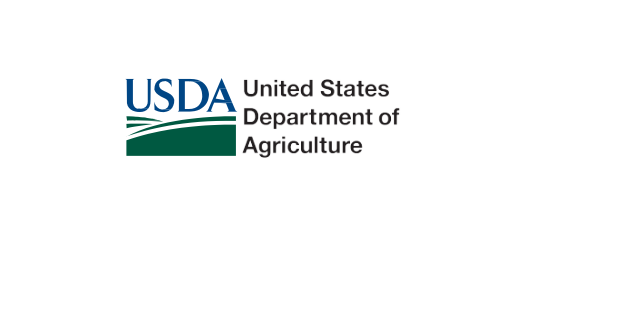
WHEAT: The outlook for 2025/26 U.S. wheat this month is for unchanged supplies and
domestic use, higher exports, and lower ending stocks. Exports are raised by 25 million
bushels to 900 million on a continued strong pace of sales and shipments of Hard Red
Winter wheat. Projected 2025/26 ending stocks are lowered 25 million bushels to 844 million
and are now slightly less than last year. The projected 2025/26 season-average farm price is
reduced by $0.20 per bushel to $5.10 on NASS prices reported to date and expectations for
futures and cash prices for the remainder of the marketing year.
This month’s 2025/26 global wheat outlook is for higher supplies, consumption, trade, and
ending stocks. Supplies are projected up 9.0 million tons to 1,078.6 million on larger
production from several major exporting countries. Australia is raised 3.5 million tons to 34.5
million on widespread favorable conditions to date as indicated by the latest ABARES
forecast. The EU is increased 1.9 million tons to 140.1 million on harvest results and
government data. Russia is raised 1.5 million tons to 85.0 million on increases for both winter
and spring wheat. Production is also higher for Canada, Ukraine, and Kazakhstan by smaller
magnitudes.
Global 2025/26 consumption is raised 5.0 million tons to 814.5 million, largely on higher feed
and residual use for the EU, Australia, Canada, Russia, and Ukraine and relatively smaller
food, seed, and industrial use increases for several countries. World trade is 1.2 million tons
higher at 214.7 million on greater exports for Australia and the United States more than
offsetting reductions for Russia and Ukraine. Projected 2025/26 global ending stocks are
raised 4.0 million tons to 264.1 million, primarily on increases for several exporting countries.
COARSE GRAINS: This month’s 2025/26 U.S. corn outlook is for greater supplies, larger
exports, and a slight reduction in ending stocks. Projected beginning stocks for 2025/26 are
20 million bushels higher based on a lower use forecast for 2024/25, with reductions in
imports and corn used for ethanol partially offset by an increase in exports. Corn production
for 2025/26 is forecast at 16.8 billion bushels, up 72 million from last month as a 2.1-bushel
reduction in yield to 186.7 bushels per acre is more than offset by a 1.3 million acre increase
in harvested area to 90.0 million acres. If realized, harvested area would be the highest since
1933 and planted area of 98.7 million acres the highest since 1936.
Total U.S. corn use for 2025/26 is forecast up 100 million bushels to 16.1 billion. Exports are
raised 100 million bushels to a record 3.0 billion reflecting U.S. export competitiveness and
robust early-season demand. With rising supply more than offset by greater use, ending
stocks are down 7 million bushels to 2.1 billion. The season-average corn price received by
producers is unchanged at $3.90 per bushel…
OILSEEDS: The 2025/26 outlook for U.S. soybeans includes higher production, higher
crush, lower exports, and higher ending stocks compared to last month. Soybean production
is projected at 4.3 billion bushels, up slightly with higher harvested area offset by a lower
yield. Harvested area is raised 0.2 million acres from the August forecast. The soybean yield
of 53.5 bushels per acre is down marginally from last month. The crush forecast is raised 15
million bushels driven by stronger soybean meal exports. The soybean export forecast is
reduced 20 million bushels on increased competition, particularly from Russia, Canada, and
Argentina. Ending stocks are projected at 300 million bushels, up 10 million from last month.
The U.S. season-average soybean price is forecast at $10.00 per bushel, down $0.10 from
last month. The soybean meal and the soybean oil prices are unchanged at $280 per short
WASDE-664-3
ton and 53 cents per pound, respectively. Other changes this month include higher U.S.
peanut production.
Foreign 2025/26 oilseed production is increased 1.1 million tons mainly on higher rapeseed,
sunflower seed, and cottonseed production that is partly offset by lower soybean production.
Foreign rapeseed production is raised 1.4 million tons on larger production for Canada,
Australia, Kazakhstan, Russia, and Moldova. Global sunflower seed production is raised 0.2
million tons on higher production for Russia and Kazakhstan that is mostly offset by lower
production for Ukraine and the EU.
The global soybean supply and demand forecasts include lower beginning stocks, lower
production, lower crush, higher exports, and reduced ending stocks. Beginning stocks are
reduced mainly on an upward revision to exports for Argentina in the prior marketing year.
Global soybean production is lowered 0.5 million tons to 425.9 million on lower production for
India, the EU, and Serbia that is partly offset by higher production for Russia and the United
States.
Global soybean crush is reduced 1.1 million tons on lower crush for India, Argentina,
Bangladesh, Saudi Arabia, and Canada that is partly offset by higher crush for the United
States, Egypt, Turkey, and Ukraine. Soybean meal trade is raised with higher exports for the
United States and Ukraine but lower exports for India. Soybean meal imports are raised for
the EU but lowered for Egypt, Turkey, and Thailand.
Soybean exports for 2025/26 are increased with higher exports for Argentina, Russia, and
Canada mostly offset by lower exports for the United States and Ukraine. Imports are raised
for Turkey, Brazil, Egypt, the EU, and Serbia. Global soybean ending stocks are reduced 0.9
million tons to 124.0 million on lower stocks for Argentina, Bolivia, and Canada partly offset
by higher stocks for the United States and Brazil.
:Read Full report
https://www.usda.gov/oce/commodity/wasde/wasde0925.pdf










